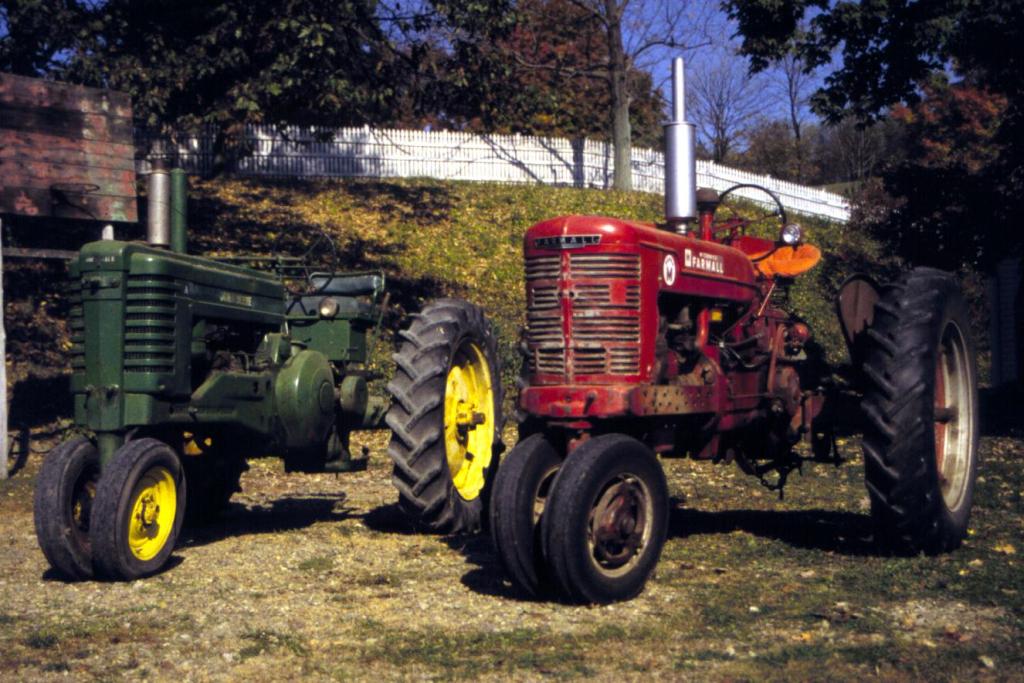I have read that positive camber is intended to align the kingpin axis with the center of the tire contact patch. Supposedly this reduces the force required to steer the axle. If that theory is true, then changing the height of the tires would change the intersection point of the camber angle and the kingpin angle; it's improbable that swapping between, say, the correct R4 tires and the correct R1 tires for your tractor would make significant differences.
However, I am not convinced by the theory that the positive camber is there for steering ease. Here is why: I think it would be easier to roll a tire around in a circle than it would be to simply twist it, especially if one considers the tire will be pushing dirt out of the way as it twists.
I think the reason for the positive camber is to attenuate the camber thrust that can occur when the tires encounter uneven terrain. This would tend to help the tractor track straighter, and require less steering input to maintain a straight course. That characteristic, along with the caster geometry, should make the tractor track straight naturally, rather than tending to turn more when either a steering input is made or some uneven terrain is encountered.
The old tricycle tractors with two front tires have an extreme situation with positive camber, and it only makes sense to me that it must be related to this type of thing (vehicle dynamics) rather than the bare required force to steer the tires.


